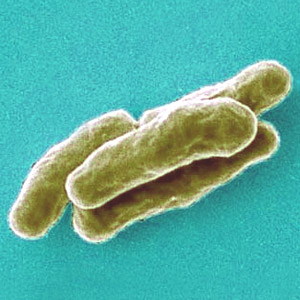Nitrifying bacteria
From The Aquarium Wiki
Nitrifying bacteria is a term used to group species of bacteria that do useful work in an aquarium in turning toxic forms of nitrogen dissolved in water (typically ammonia (NH³/NH4) and nitrite (NO²)) into other forms of less toxic nitrogen (typically nitrate NO³).
Species[edit]
Nitrosomonas Species: These are the ones that convert ammonia (released by rotting fish or plant waste) into Nitrite.
Nitrobacter sp.[1] and Nitrospira Species: They convert the nitrite into nitrate. Both of these are usually present in the filter.
- Nitrosococcus and Nitrococcus are the main nitrifying bacteria used in salt water aquariums.
Growth Needs[edit]
- A water temperature of around 20-30°C (68-86°F)
- A water ph of 7.2-8
- The water must have a KH and a GH of at least 6d (107.2ppm).
- A nitrogen food source. Preferably free Ammonia (NH3)
- A good supply of oxygen in the water. At least 3ppm.
Growth suppressors[edit]
- Light. Nitrifying bacteria prefer to grow and operate in the dark.
- Heavy metals and chemical metal chelators or binders slow growth.
- High levels of NH3 (above 3ppm) suppress the bacteria's growth.
- Lack of suitable surfaces to grow on. Bacteria prefer rough, high surface area surfaces. See Seachem's Matrix product.
- Denitrifying Bacteria: This is the term used for a range of anaerobic bacteria that feed off oxygen from nitrate and work in conditions where there is no free oxygen to use. (In cases, they can turn nitrate back into nitrite).
- See also Bacteria.
Commercial Bacteria[edit]
- One and Only from Dr. Tim Hovanec, inventor of Bio-Spira. A nitrifying bacteria that allows addition of fish immediately in new tanks.
- Clear-UP Natural Water Clarifier - Uses bacteria to perform natural clumping of particles in the water so that the filter can remove them.
- Re-FRESH for Natural Fresh Sparkling Water - Uses bacteria to remove unpleasant odours in the aquarium and to clean up surfaces.
- Eco-Balance friendly Probiotic Bacteria - A bacteria that suppress disease micro-organisms in the gut of fish.
- Waste-Away Natural Aquarium Cleaner - A bacteria that reduces sludge and mulm therefore reducing maintenance.
- Bio-Spira developed by Dr. Tim Hovanec via MarineLand. A nitrifying bacteria that makes new tanks ready to take fish within 24 hours or less. (This product is now obsolete having been effectively renamed as SafeStart by Tetra.
- Stability by SeaChem. A nitrifying bacteria that makes new tanks ready to take fish within 24 hours or less. Also contains a waste control bacteria species.
- SafeStart by Tetra - A nitrifying bacteria that makes new tanks ready to take fish within 24 hours or less.
- Nutrafin Waste Control by Hagen Nutrafin - A waste consuming heterotroph bacteria that eats the mulm and releases the chemicals contained in the muck quicker for plants and infusoria to digest. Reduces filter maintenance and cleans the substrate. Performs Competitive Exclusion. See video
- Nutrafin Cycle. A nitrifying bacteria (Nitrospira) that makes new tanks ready to take fish within 24 hours or less (new version).
- Stress Zyme by API. A comprehensive waste consuming bacteria that eats the mulm (uneaten food, dead plant, fish waste, etc.) and releases the chemicals contained within for plants and infusoria to digest. Performs Competitive Exclusion.
- Viresco Aqua - a microbial mixture that removes organic waste, nitrate and reduces phosphate. For commercial farmers and pet fish shops.
- Viresco Koi - For use in ponds.
- Viresco Digester - Organic waste digester.
- Viresco Aquarium - A microbial mixture that removes organic waste, nitrate and reduces phosphate.
- Viresco Filter-Start - A nitrifying bacteria mixture for new aquariums.
- Viresco Probiotic - A bacteria that suppress disease micro-organisms in the gut of fish.
- Viresco NitroGone - A nitrate removing product for ponds.
- Microboost - A food source for pond micro-organisms. It also contains some Viresco Aqua.
References[edit]
- ↑ Dr. Tim Hovanec claims that it is Nitrospira sp. and not Nitrobacter that is the primary species for converting nitrite into nitrate. See PDF Paper.
Links[edit]
- Behavior and Physiology of Nitrifying Bacteria by James E. Alleman, Ph.D. and Kurt Preston (archived link 2008) (copy)
